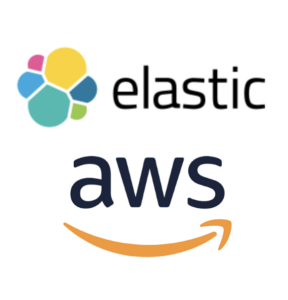One of the hallmarks of the big data era has been widespread use of free and open source software. But in recent months, companies like Cockroach Labs and Anaconda have pulled back on their commitments to free and open software, while Elastic–one of the vendors that originally pulled back from open five years ago–announced a return to open source licensing last week. What does this signify for open source?
Cockroach Labs raised some eyebrows last month when it announced the end of its free Core offering. Starting with the release of CockroachDB version 24.3 in November, the company will only offer the enterprise version of its product, the company said.
The caveat to the announcement is that all individuals, students, and small businesses with less than $10 million in annual revenue will be permitted to run CockroachDB Enterprise for free, Cockroach CEO Spencer Kimball wrote in a blog post.
The change was made to not only ensure that all CockroachDB customers get access to the full breadth of capabilities in the distributed relational database, but that it ensures a “a fair exchange of value,” Kimball wrote.![]()
This move has been a long time in coming. Cockroach initially dropped the Apache 2 license back in 2019, and opted instead a more restrictive “source available” BSL license, which permitted users to run the database but required anyone from offering a commercial version of CockroachDB to purchase a license.
But Cockroach was not the first open source vendor to move away from the permissive Apache 2 license. Confluent, the company behind Apache Kafka, ditched Apache 2 in December 2018 in favor of a new Confluent Community License. MongoDB announced its Server Side Public License (SSPL) in October 2018, and Redis Labs, which announced a new Commons Clause to its open source license in August of that year. Grafana, part of the Elastic stack, ditched Apache 2 in favor of the GPL license in April 2021. Lightbend the developer of the Akka platform, which shifted from Apache 2 license to BSL back in September 2022. Streaming data platform provider Redpanda has also adopted the BSL in its quest to upset the Kafka applecart.
Anaconda, which develops a package of open source tools for data science, is also going down this road. Since 2012, the company has been doing the hard work of bundling hundreds of open source Python- and R-based data science tools and distributing them in a package. The Anaconda Distribution contains more than 250 libraries, such as NumPy, Pandas, SciPy, while the Anaconda repository has nearly 8,000 libraries.
Open source is core to Anaconda’s mission, but in early 2020, the Austin, Texas company announced a change in its terms and began asking “heavy users” to pay $15 per user to access the package. Later that year, it clarified the terms, and the result is commercial entities with 200 or more users must pay. However, the company has recently caused some consternation in large universities and other academic institutions with large Anaconda user bases, who are being asked to pay up for data science software they once considered free to use.
Like Anaconda, Cockroach Labs decided a monetary change was necessary to protect its commitment to open source software (OSS) as well as its business.
“Competitors have always been legally allowed to offer another company’s OSS product as a service,” Cockroach’s Kimball wrote in a 2019 blog post that’s been archived. “Now, we’re finally seeing it take place. We’re witnessing the rise of highly-integrated providers take advantage of their unique position to offer ‘as-a-service’ versions of OSS products, and offer a superior user experience as a consequence of their integrations. We’ve most recently seen it happen with Amazon’s forked version of ElasticSearch…”
Elastic’s journey has been quite instructive. Following the launch of Amazon Elasticsearch Service by AWS in 2019, Elastic responded by pulling the plug on the Apache 2 license for Elasticsearch and Kibana in January 2021, and replacing those licenses with BSL-derived licenses. As then-CEO Shay Bannon explained, the shift to BSL came with some built-in restrictions and provisions, including a possible shift back to a more permissive license within five years.
That appears to be what happened last week, when Elastic announced that Elasticsearch and Kibana are being licensed under the GNU Affero General Public License v3 (AGPL), which is an Open Source Initiative (OSI)-approved open source license.
“We’re delighted to reintroduce an OSI-approved open source license to Elasticsearch and Kibana,” said Shay Banon, who is now CTO, said in a September 3 press release. “Elastic has always strongly believed in the ethos of open source and the clarity and transparency that it enables.”
One of the reasons for the return to an open source license is the market confusion caused by Amazon’s fork has, for the most part, lifted, Banon said.
“The good news is that while it was painful, it worked. 3 years later, Amazon is fully invested in their fork, the market confusion has been (mostly) resolved, and our partnership with AWS is stronger than ever,” Banon wrote in a blog post. Elastic was even named AWS’ partner of the year, he added.
The lesson of all of this is that you move away from open source at your own peril, said Karthik Ranganathan, the founder and co-CEO of Yugabyte, which makes distributed relational database based on Postgres that competes with CockroachDB.
“Open source forces competition and innovation, and brings adoption,” Ranganathan told Datanami. “Open source really gives [customers] optionality….The fact that it’s open source, there’s almost a de-risking factor.”
One of the reasons that adoption in Postgres has been so great the past few years is because it’s open source, he said. If they don’t like one Postgres service, then can pick up their database and move somewhere else, with a minimum of muss and fuss. What that means is that any database that’s built atop a Postgres core needs to be as open as Postgres, or it will lose that force and adoption driver, he said.
“If you’re thinking you’re the future of Postgres in the cloud, you’ve got to be as open as Postgres,” Ranganathan said. “How do you expect to do it without being as open?”
Asked how he would respond if AWS decided to offer its own version of Yugabyte’s distributed database as a service in the cloud, Ranganathan said he would not fight it. In fact, it might even be a good thing, he said.
“We feel that yes, that will actually put wind in our sails more than take it away because it will drive more people to the database,” he replied. “As the creators and the innovators on the database, we think more people will come to us. So it’s just good for everybody, right? It’s kind of the way open source should work.”
Related Items:
Cloud Backlash Grows as Open Source Gets Less Open
Grafana Ditches Apache 2.0, Switches to AGPL
The Future of Databases Is Now
The post Does Open Source Software Still Matter? appeared first on Datanami.


0 Commentaires